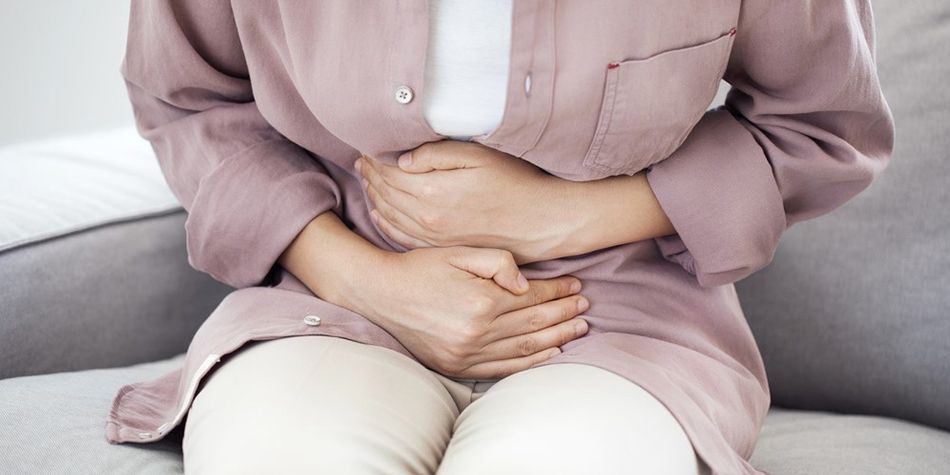
Endometriosis is a common health issue for people who menstruate. It affects an estimated one in 10 people with uteruses — roughly 176 million individuals worldwide — during their reproductive years, which is generally between the ages of 15 and 49. Despite how common the condition is, endometriosis awareness is often lacking for both patients and doctors. This can lead to delayed diagnosis and treatment.
What is endometriosis?
Endometriosis is a condition in which tissue that is similar to the lining inside the uterus (called the "endometrium") is found elsewhere in the body. This tissue is usually found on other reproductive organs inside the pelvis, such as the ovaries or the fallopian tubes, or in the abdominal cavity.
The exact cause of endometriosis is unknown. One theory suggests that it is caused by a sort of "reverse or retrograde menstruation." This theory hypothesizes that during menstruation, some of the endometrial tissue backs up through the fallopian tubes into the abdomen. Other theories look at genetic factors, problems with the immune system and complications from surgery.
Although endometriosis is very common, it often goes undiagnosed for years. That's because the symptoms can be attributed to other conditions, or may be ignored or dismissed as 'just a bad period.' For that reason, many individuals who have endometriosis may be affected by it for years before seeking help. While there is currently no cure for endometriosis, the symptoms can be managed with medication or surgery.
What are the symptoms of endometriosis?
According to the Office on Women's Health, the most common symptom of endometriosis is pain. Common types of pain include very painful menstrual cramps that worsen over time and pain during or after sex (called dyspareunia). Other painful symptoms individuals with endometriosis may experience include:
- Chronic pain in the lower back and pelvis
- Intestinal pain and painful bowel movements
- Pain when urinating during menstrual periods
Pain from endometriosis is different from the pain many people experience with premenstrual syndrome (PMS) in that it is not caused by contractions of the uterus. Endometriosis pain is a result of inflammation from uterine cells being implanted outside of the uterus. Endometriosis pain is usually more severe than period pain and can occur even when an individual is not having their period.
 Dr. Nicole Tran, a gynecologist at The Woman’s Hospital of Texas who specializes in treating people with endometriosis, recommends taking NSAIDs like ibuprofen or naproxen, regular exercise, acupuncture or pelvic floor physical therapy to help ease endometriosis pain. For those who aren’t trying to conceive, she recommends hormonal treatments, such as combination oral contraceptives or progesterone.
Dr. Nicole Tran, a gynecologist at The Woman’s Hospital of Texas who specializes in treating people with endometriosis, recommends taking NSAIDs like ibuprofen or naproxen, regular exercise, acupuncture or pelvic floor physical therapy to help ease endometriosis pain. For those who aren’t trying to conceive, she recommends hormonal treatments, such as combination oral contraceptives or progesterone.
Other symptoms of endometriosis include:
- Heavy menstrual flow
- Infertility
- Digestive problems such as diarrhea, constipation or bloating
What are the risk factors for endometriosis?
People who have any of the following risk factors might be more likely to have endometriosis:
- Family history of endometriosis
- Starting your period before age 11
- Menstrual cycles less than 27 days
- Menstrual flow longer than 7 days
- Heavy menstrual bleeding
When should you talk to a doctor?
If you are experiencing any of the symptoms of endometriosis, it's important to talk to your doctor as soon as possible. According to SpeakENDO, endometriosis can take anywhere from six to 10 years to diagnose and may require visits to several doctors, so it's best to seek help as soon as you notice something amiss. Some symptoms such as infertility may not be immediately apparent unless you are actively trying to get pregnant. Since infertility can be linked to other conditions such as polycystic ovary syndrome (PCOS), your care team can help you rule out other potential causes.
In order to diagnose endometriosis, your doctor will ask you to describe your symptoms, such as the location of pain and when it occurs. Your doctor may then do a pelvic exam to feel for any abnormalities in your pelvis, such as cysts or scars. Your doctor may also do an ultrasound to get a view of your reproductive organs. Although a standard ultrasound won't give your doctor a definitive answer about whether or not you have endometriosis, it can help identify cysts that are often associated with endometriosis.
Treatment will depend on how severe your symptoms are and whether or not you are planning to have children. You may be given pain medication, such as non-steroidal anti-inflammatory drugs (NSAIDs), if your pain is mild. If your pain is more severe, your doctor may recommend surgery.
There are conservative surgical options available that attempt to remove only endometriosis tissue to try and preserve fertility. Dr. Tran is trained in robotic-assisted laparoscopic surgery, which offers endometriosis patients a shorter recovery time, smaller incisions and less pain. This surgical technique is minimally invasive and removes endometriosis tissue and lesions that grow outside of the uterus and other surrounding areas of the body.
“Robotic surgery has a more advanced camera system with 3D imaging and instruments that have full rotation,” states Dr. Tran. “This allows for more dexterity to perform more complicated surgeries, which are commonly encountered with endometriosis.”
Another surgical treatment option for endometriosis is a hysterectomy, which involves removing the uterus. You will not get a period or be able to conceive after having a hysterectomy, so it is important to consider this before having the procedure. Dr. Tran only recommends a hysterectomy if the patient is done having children and conservative treatment and surgery have failed.
“Studies show that after surgery endometriosis grows back at a rate of 20% within two years and 40% within five years of surgery, which is why it is important for those patients to use oral contraceptive, other suppressive hormonal therapy, or progesterone to decrease the risk of endometriosis returning,” says Dr. Tran.
Endometriosis awareness is critical for enabling individuals with uteruses to seek help and receive care sooner rather than later. It is important for patients and doctors to know what to look for and to understand that the pain from endometriosis is real and shouldn't be dismissed or ignored. Although there is currently no cure for endometriosis, there are treatments available that can help improve quality of life and make the symptoms more manageable.
“Endometriosis is a difficult and chronic condition, so some gynecologists do not feel comfortable treating it,” says Dr. Tran. “It’s OK to ask your gynecologist for a recommendation for someone who specializes in treating endometriosis. I encourage my patients to be proactive and to advocate for their health.”
$webqFacilityNumber
Need a Physician?